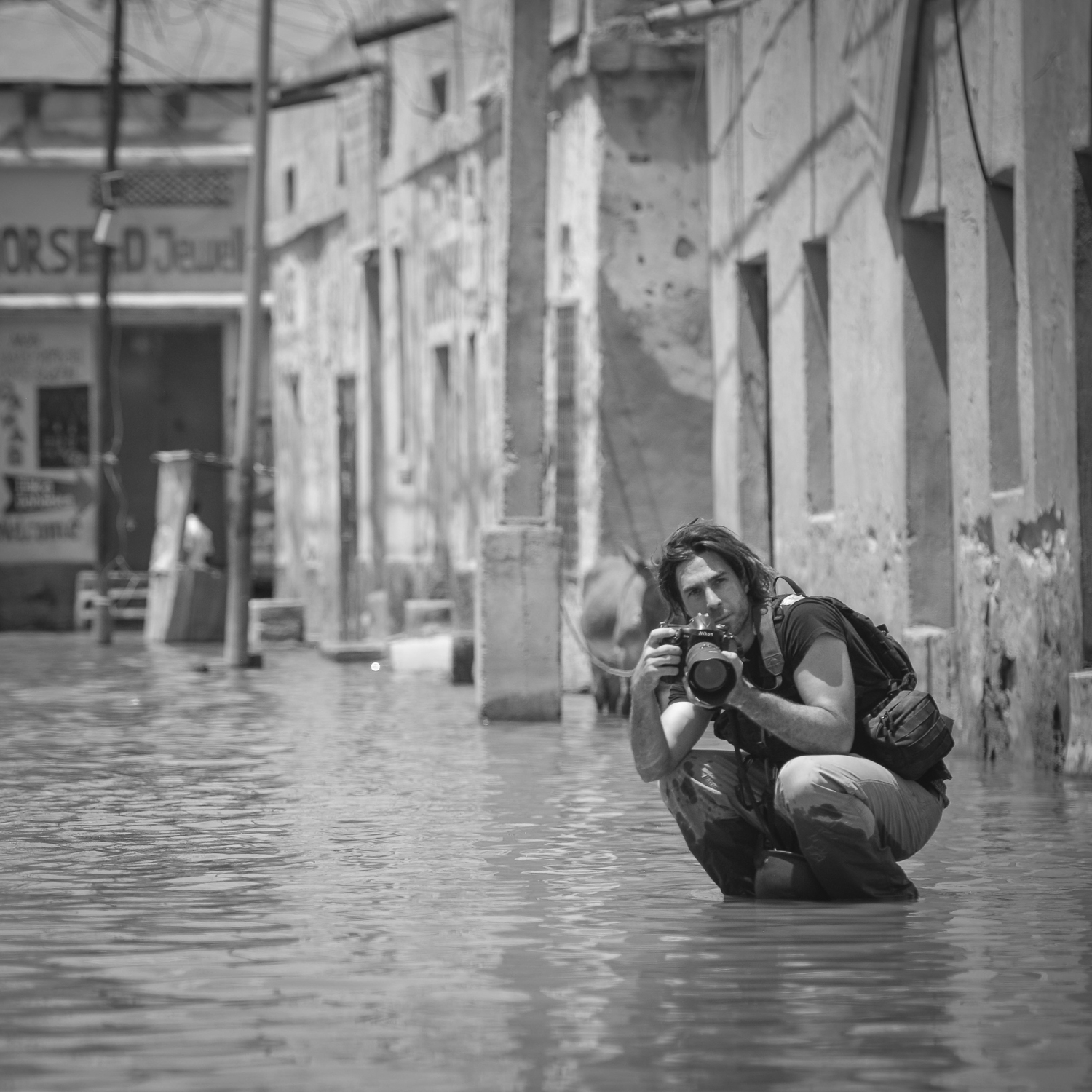Milena Rampoldi, 15/4/2022
Born in Botswana, in a rural hospital his dad likes to remind him only charged them 17 pula for the privilege, Tobin began his life in the small dusty village of Gumare on the banks of the Okovango Delta. It wasn’t too long though, before his family moved on, this time to the the capital city of Lilongwe in Malawi. It was here Tobin spent the majority of his childhood, riding his bike around town, fighting with his siblings, and generally learning how to be a kid. Finally, when he was 10 his family once again moved up the African continent, this time to Kenya - where Tobin finished up high school.
Having photographed throughout Africa, and sometimes further afield, for the last decade - through his work Tobin has attempted to not only cover the breadth of the continent, but also the diversity within it. This has included stories on Somalia’s fight against Al Shabab and the country’s emergence from more than 20 years of civil war, to transgender issues, and the intersection of modern religion with traditional healing practices in slums.
Tobin holds a bachelor’s degree in International Development, with minors in Economics and Political Science, from McGill University and a Master’s degree in Photojournalism from the University of Westminster. Today he lives in Nairobi, Kenya, where he runs the photo collective NonAligned and works as a freelance photographer and videographer.
 |
Why did you become a photographer?
I first got interested in photography right after high school. I took a year off before university and went to Fiji, where I first started to take photographs. In University I then began taking photographs using film and developing those photographs in the darkroom. Slowly it dawned on me that perhaps I might one day be able to make a career out of photography and so after university I went back home to Kenya, started photographing stories that interested me, and eventually was able to make a living that way.
Tell us about your project in Somalia?
I began working in Somalia back in 2012 - initially with the African Union and United Nations covering the conflict against al Shabab. This often meant joining the military on their offensives to capture new towns from the extremist group and liberate parts of the country that had been under their control for the last decade. As the country has become more peaceful though, my work evolved to capturing the country’s emergence from two decades of civil war and the development that went along with this.
In a quieter alley in Sanaa’s old city, two young boys sweep up dust and refuse that have accumulated over the course of the day. Untouchables In Yemen | Tobin Jones Photography | Sana'a, Yemen
What are the challenges of photography in countries like Yemen and Somalia?
The biggest challenge photographing in countries like Yemen and Somalia is of course security and all of the logistics that surround this. As a photographer you always want to prioritize good light and any condition that will help you to create the best photograph possible, but when your safety is at stake you of course have to enter this into the equation as well. The result is that often you have to work in conditions that aren’t optimal (like the middle of the day) and don’t have as much time as you’d normally want.
Morine, standing outside of her hair salon, takes a short break before starting on another hair cut. Transgender In Kenya | Tobin Jones Photography | Nairobi, Kenya
Tell us about the project you did in Kenya with transgender persons. Why did you do it and what is the main objective of it?
This project was quite a few years ago now, but essentially it was a photoessay about a transgender woman in Kenya who grew up in the slums and now runs a hair salon in a nearby neighborhood. She had really become an accepted part of her community, which was both really inspiring and interesting, seeing as there’s still a huge amount of discrimination generally against the lgbtq+ community in Kenya.
How do you think photography can contribute to human rights and mutual understanding?
Photography’s biggest strength is probably its ability to impart empathy on the viewer. A powerful photograph can evoke emotion in a way I don’t think the written word or even video is able to do to quite the same degree. I think that’s why photography often works so well alongside another medium like writing. Text is very good at contextualizing a situation and making someone understand the big picture (like a refugee crisis), while a photograph is very good at personifying a subject and making someone understand the personal impact of something like a refugee crisis.
What does the sentence “1 picture says more than 1000 words” mean to you personally?
I have to admit that I’ve never particularly loved the phrase, “A picture speaks 1000 words.” I think it insinuates that photography is more important than the written language when the reality is that both work best when used in tandem. Photography’s extremely important at conveying certain things, and particularly at evoking emotion in the viewer, but the written word is extremely good at contextualizing. Each has its own strengths and weaknesses.
What are the next projects you are planning?
I’ve currently become quite interested in NFTs and will shortly be releasing my latest project in this form as a series of portraits of a group of grandmothers in a Nairobi slum who have taken up martial arts in order to defend themselves. It’s both an interesting story, but will also be using this new medium to experiment how photojournalism can benefit the subjects of stories as well through payments in crypto.





Aucun commentaire:
Enregistrer un commentaire